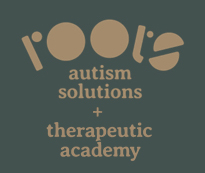Understanding the IEP – Measurable Goals
In the world of ABA, BCBA’s are well versed in ensuring that goals are measurable, as data is the foundation of applied behavior analysis. Everything we do within ABA therapy relies on the data that is collected, and the progress that an individual makes. At the school level, IEP goals are intended to collect data and measure progress, but often time the goals that are written are not measurable. If the goal is not measurable at the start, there is no way for the IEP to reflect progress through the year.
How do parents and caregivers ensure that the goals written in the IEP are measurable? First and foremost, the goals must connect to the present levels of academic achievement and functional performance (PLAAFP), which was the focus of a previous post. Hence, a reading goal should be attached to the reading PLAAFP. Additionally, the content of the PLAAFP should lead the reader to understand why the goal is necessary. For example, the PLAAFP for Sam mentions that he is unable to name all 26 letters of the alphabet both upper and lower case consistently. The PLAAFP states that on 50% of occasions Sam is able to name “C”, “F”, and “M”. In this case, it would not make sense for the goal on this goal page to be focused on “WH” questions. It would only make sense for the goal to focus on naming letters of the alphabet.
Once the purpose of the goal is clear, the reader should be able to read the annual goal, which is what the child will be expected to do by the end of the IEP year. The annual goal is reached by measuring the progress via benchmark points throughout the IEP year. While the annual goal is typically stated before reading the benchmarks, it is important to remember that in one IEP year, the child should reach that goal. Each benchmark should be a step in the ladder to reaching that annual goal. Below is an example of how a goal might be written using the above mentioned need for Sam:
Annual Goal – By the end of the IEP year, Sam will name all 26 letters of the alphabet both upper and lower case with 95% accuracy when presented with each letter in isolation.
Benchmark 1 – Sam will name the letters A – M in upper case format when presented with each letter in isolation with 95% accuracy.
Benchmark 2 – Sam will name the letters N – Z in upper case format when presented with each letter in isolation with 95% accuracy.
Benchmark 3 – Same will name the letters a – m in lowercase format when presented with each letter in isolation with 95% accuracy.
Notice, there is no benchmark 4, that is due to the fact that the annual goal is benchmark 4.
Now that is is clear what a measurable goal does look like, it’s important to consider how a goal should not look! Often times, IEP goal writers want to make a great deal of progress on a variety of things, which is great! However, an IEP goal should not be loaded with everything they want to cover in one year. For example, expecting Sam to both name his letters, write them, and state the sound the letter makes all in one goal, it creates an unmeasurable goal. Combining all those skills would also lack focus, as each skill is independent and/or builds on the another.
Another key component of measurability is something that was also touched on in previous posts, objectivity. Ask yourself, can the goal be measured by collecting objective data? Keywords that are subjective, and would be red flags within a goal might be: often, minimal, maximum, or good. It is important to keep subjective words out of IEP goals, as everyone’s perception of the mastery and support is unique to their perspective.
We are here at Roots Autism Solutions to support our families with understanding the quality of the IEP that is developed for their child at the school level. We don’t stop at ABA therapy in the home, we are there for our families at home and in the school! Let us know if we can help you better understand the IEP for your child!






